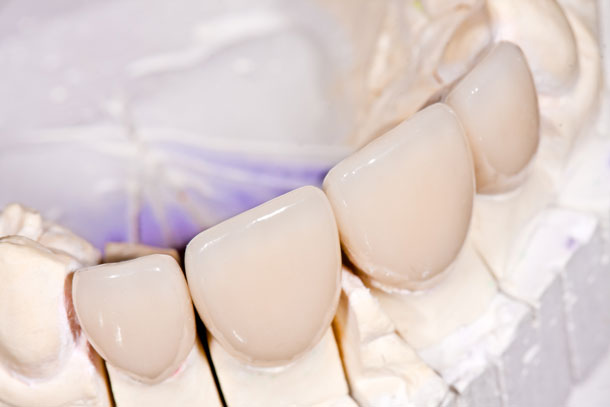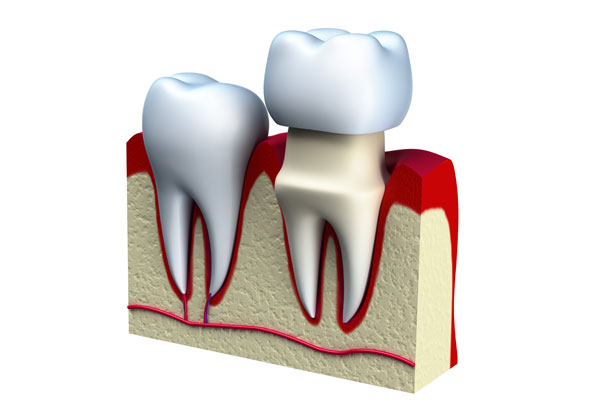Complete Dentistry Services
Our New Brighton cosmetic dentistry practice not only offers high quality Cosmetic Dentistry Services, but also provides comprehensive care for our patients through professional General Dentistry Services.
General dentistry
Our New Brighton practice is proud of our ability to help our patients improve their overall dental health through General Dentistry Services.
Cosmetic dentistry
Cosmetic dentistry today takes into consideration many different treatment options, including general and preventative dentistry to maintain a beautiful and healthy smile. Learn more about our Cosmetic Dentistry Services.
Specific services and technology in our general dentistry practice
Browse the topics below to learn more about how we can help every member of your family keep their teeth and gums healthy for a lifetime.
- Bridges
- Dental Crowns
- High Quality Dental Implants
- Root Canals
- Sealants
- Composite Fillings
- Brushing
- Flossing & Periodontal (Gum) Disease
- Fluoride
- Snoring
- Headaches and Dental Stress

Why might you need a bridge?
If you’re missing one or more teeth, you may be aware of their importance to your appearance and dental health. Your teeth work together to help you chew, speak, sing, and smile. When you lack teeth, it’s difficult to do these things. Fortunately, missing teeth can and should be replaced. You can restore your oral health and your smile with a fixed bridge.
What materials are used?
Appearance and function are considered when selecting materials for bridges. Bridges are made from gold alloys, non-precious alloys, porcelain, or a combination of these materials. Porcelain is often bonded to either precious or non-precious metal. We will discuss which materials are best for you.
How do I care for my bridges?
It is very important to keep your remaining teeth healthy. Follow good preventative dental health practices. Brush twice a day, and clean between the teeth with floss or interdental cleaners (specially shaped brushes as well as rubber, plastic, or wooden items) to remove plaque. A bridge can lose its support if the teeth or the bone that holds it becomes damaged by dental disease. Be especially careful to clean the areas under, around, and between the bridge and your natural teeth. Dental floss threaders and special brushes can help you reach these areas. It is also important to visit your dentist regularly. Remember, the ultimate success or failure of a fixed bridge depends on its foundation. Help keep your gums and remaining teeth healthy. Your dental health and your appearance are worth the effort!
- To support a large filling when there isn’t enough tooth remaining
- To attach a dental bridge
- To cover a dental implant
- To protect weak teeth from fracturing
- To restore fractured teeth
- To cover badly shaped or discolored teeth
Why might you need dental crowns?
When teeth are cracked, stained or damaged, they detract from your dental health and your appearance. To restore them, we may recommend dental crowns at our practice.
What materials work best for dental crowns?
Crowns can be made using a variety of materials, each affecting both the “look” and function of the dental crown. Gold alloys, nonprecious alloys, porcelain, ceramic, acrylic or composite resin or combinations of these materials may be used. Dental crowns made entirely of porcelain can be “bonded” to your tooth and are the most natural looking. In the process of making a crown, the porcelain is colored to blend in with your natural teeth. We take a number of factors into consideration in choosing the material that is most suitable for you. When selecting a crown material we consider the location of the proposed crowns, the position of the gum tissue, the amount of tooth that shows when you smile, the color or shade of the tooth and the function of the tooth.
How is a crown placed?
Several steps are involved in placing a crown. Usually at least two visits are necessary. In the first visit:
- We will prepare the tooth by removing the outer portion of your tooth to accommodate the thickness of the crown. If the tooth has a filling, part of the material may be left in place to serve as a foundation for the crown.
- An impression is made to provide an exact model of the prepared tooth.
- We will then make the crown from the model.
- “Temporary” crowns (often made of acrylic resins) are placed while the permanent crown is made. A temporary crown may be used if the shape or length of your teeth are changed for cosmetic purposes. The temporary crown will help you become accustomed to the change. Temporary crowns can also help you decide if you like what you see or if there are any changes that you would like made before the permanent crowns are placed.
In the second visit:
- When the permanent crown is ready, the dentist puts it in place and makes necessary adjustments. When you and your dentist are satisfied with how the new crown is positioned it will be cemented in place.
How do I take care of a crown?
Regular dental health is especially important when you have crowns. Preventative dental health includes brushing twice a day and cleaning between your teeth daily with floss or interdental cleaners (specially shaped brushes and sticks or picks). When you have crowns it is especially important to remove the plaque that can build up near the gum line. To prevent damaging or fracturing the crowns, avoid chewing hard foods, ice or other hard objects. It is also important to visit your dentist regularly.

The procedure
We will create an impression of your mouth, which will allow us to make precise measurements and pinpoint the optimum location for the dental implants. An oral surgeon will place the implant. Once the implant is in place, we will give you time to heal, typically 4-6 months. When the area is healed, the team at Silver Lake Dental will attach the custom-made restoration.
Will dental implants work for me?
Dental implants are a great way to replace missing teeth, whether it’s a single tooth, multiple teeth, or a full set of dentures that you are replacing. Dentures, bridges, or individual teeth attached to dental implants provide stability, a more secure fit, and a more natural look and feel. Contact us today, to see how Silver Lake Dental can help you restore your crowns with implants, and give you the smile you’ve been dreaming about!
Root Canals
When the pulp inside one of your teeth is injured or infected, a root canal may be recommended. The pulp is the soft tissue inside your tooth that contains blood vessels and nerves. The most common causes of pulp damage are a cracked tooth, a deep cavity or decay, problems with large fillings or injury to the tooth. If the damaged or diseased pulp is not removed, the tissues around the root of the tooth can become infected, resulting in pain and swelling. Even if there is no pain, bacteria can damage the bone that anchors the tooth to the jaw bone.
The root canal treatment may be completed at our office, or we may refer this treatment to a specialist called an Endodontist.
Regardless of where the treatment is completed, the process is the same. The tooth will be numbed, and an opening will be made in the tooth to access the pulp chamber. The tooth’s nerve or pulp is then removed and each root canal is cleaned and shaped so it can be filled. Medicine may be placed in the pulp chamber to help get rid of any bacteria. A temporary filling will be placed to protect the treated tooth. Sometimes antibiotics will be recommended if any infection has spread beyond the root of the tooth. The final step will be the permanent restoration which could be a permanent filling or a crown depending on the tooth.
Root canal treatment is a good option to allow you to keep your natural tooth and allow you to continue to chew and keep you healthy.
Sealants
A sealant is a thin plastic coating that fills the grooves of molars and premolars. These grooves collect plaque, a film of food and bacteria. Toothbrush bristles usually can’t reach the plaque that accumulates within the grooves, and this can cause decay. 
When should your child get sealants?
We recommend applying sealants to teeth as soon as the permanent molars come in, usually between the ages of 5-7 for the first molars and between the ages of 11-14 for the second set of molars and the premolars. As they wear out, they should be replaced.
How are sealants applied?
After we clean and dry the teeth, we apply a special solution that slightly roughens their surface. This increases the bond’s strength. We paint the sealant on, then harden it with a harmless, high-intensity light, forming a protective shield against decay.
Composite Fillings
A composite filling is a tooth-colored plastic and glass mixture used to restore decayed teeth. You will generally be numb when we are placing a composite filling. The tooth will be prepared then the composite material is placed in layers. Each layer is hardened by using a specialized light. The doctor will shape the composite to fill the tooth and then it is finished with a polish.
The advantages of composite fillings are that they can be blended and matched to your actual tooth color and they are bonded to your natural tooth which can help prevent breakage. Some people may experience postoperative sensitivity that will usually subside within a few weeks after placement. Composites can also change color if you drink tea or coffee, or eat other staining foods regularly. Seeing your dentist for your regular preventative visits can help to minimize any staining.

Your Brushing Technique
Using a small amount of fluoride toothpaste, hold the bristles of the brush along your gum line at a 45° angle. Move the brush gently but firmly, with small circular motions. Brush two or three teeth at a time, then move to the next teeth, overlapping slightly. Comfortably reach all of your teeth.
Clean all surfaces of every tooth
Find a routine that works for you. For example, brush the backsides of every tooth, then brush the front and chewing surfaces of each tooth. Finish by brushing your tongue and the roof of your mouth, to remove germs and freshen your breath.
Flossing Prevents Gum Disease
Most cavities and gum disease cases we treat start between the teeth, where bristles of the toothbrush just can’t reach. To prevent gum disease, our staff can show you the best method of flossing to remove plaque from between your teeth. 
The Correct Technique For Preventing Gum Disease
Wind about 18 inches around the middle fingers of each hand, leaving about five inches between your hands. Pinch the floss between your thumbs and index fingers, and gently guide it between your teeth, using a side-to-side motion. Pull it tightly into a C shape around the side of your tooth. If you have any questions, our staff will be happy to demonstrate the most effective method of flossing to prevent gum disease. Gum disease is a threat to your oral health. Research is also pointing to possible health effects of periodontal diseases that go well beyond your mouth. Whether it is stopped, slowed, or gets progressively worse depends a great deal on how well you care for you teeth and gums every day. We treat many people suffering from periodontal (gum). An estimated 80 percent of American adults currently have some form of the disease. The cases of periodontal disease we treat at our practice range from simple gum inflammation to serious disease that results in major damage to the soft tissue and bone that support the teeth. In the worst cases, teeth are lost. Visit our article on Periodontal disease to learn more about it and what you can do to prevent it.
Plaque Causes Periodontal Disease
Our mouths are full of bacteria. These bacteria, along with mucus and other particles, constantly form a sticky, colorless “plaque” on teeth. Brushing and flossing help get rid of plaque. Plaque that is not removed can harden and form bacteria harboring “tartar” that brushing doesn’t clean. Only a professional cleaning by a dentist or dental hygienist can remove tartar.
Floss every tooth
Every tooth matters when flossing to prevent gum disease. Slide the floss up the side of your tooth and down below the gum line. Repeat the process for each tooth, using a fresh section of floss for each. If your teeth are too tight, or if the floss catches or tears, let us know. Many times this indicates a problem with your filling or tooth and you may need to consider other dentistry options.
All floss is not the same. Consult with your hygienist regarding which type of floss would be best for your needs.
 Fluorides are, of course, beneficial for children, but many adults also suffer from problems for which fluoride may also be the answer. A recent National Institute of Dental Research survey reported that adults had an average of 23 decayed and filled tooth surfaces. Recurrent or secondary decay around fillings represents a major dental problem. Surveys find that 40-50% of total adult fillings are done to replace existing fillings. Fluoride treatments can be the answer for you. Research shows that properly applied fluoride blocks cavities by forming a more acid-resistant surface layer. It can even reverse (remineralize) early forming cavities (white spots). There are various prescription strength fluorides that can be tailored to your specific needs.
Fluorides are, of course, beneficial for children, but many adults also suffer from problems for which fluoride may also be the answer. A recent National Institute of Dental Research survey reported that adults had an average of 23 decayed and filled tooth surfaces. Recurrent or secondary decay around fillings represents a major dental problem. Surveys find that 40-50% of total adult fillings are done to replace existing fillings. Fluoride treatments can be the answer for you. Research shows that properly applied fluoride blocks cavities by forming a more acid-resistant surface layer. It can even reverse (remineralize) early forming cavities (white spots). There are various prescription strength fluorides that can be tailored to your specific needs.
Adults and Cavities
The incidence of root caries in the adult population is steadily increasing. As we grow older, many of us suffer from gum recession. This means that root surfaces become exposed, with no enamel to protect the surface. Changes in medications, and our food and beverage choices throughout the day, drop the the acidity level in our teeth just enough to start the cavity process on the root surfaces. To prevent cavities as adults, use flouride daily.
Sleep Apnea Treatment
Sleep Apnea affects a large portion of our patients. It is estimated that up to 50% of adults have some snoring disorder such as sleep apnea. A host of solutions are available at our practice. Some may underrate the seriousness of problems such as snoring and sleep apnea. Disrupted sleep on an ongoing basis can lead to relationship problems and affect the physical well being for both the snorer and the partner alike. Snoring not only robs you of the rest you need, it also robs those closest to you. You both wake up tired, and often feel irritable and sluggish during the day. 
What causes snoring?
When you’re asleep, the muscles and soft tissues in your throat and mouth automatically relax. The lower jaw and tongue drop back, helping block and decrease the airway opening. This results in an increase in the velocity of air flowing through your airway when your breathe. The increased velocity causes soft tissues in your mouth and throat to vibrate. That familiar snoring sound is actually the sound of those tissues vibrating. In its most severe form, the collapse of the upper airway is so complete that the lungs may not receive oxygen for up to 30 seconds. This is called “Obstructive Sleep Apnea”, a problem keeping many Minnesota lights on at night. In response to the deprivation of oxygen, your body triggers an internal alarm and you partially wake. This is usually accompanied by loud gasps for air that can last 3 seconds or more, until you fall asleep and the cycle starts all over again. Snoring is also affected by diet, health, lifestyle, age, weight, environment, and other factors. If you are interested in additional information on sleep apnea, contact our Minneapolis/St. Paul area office.
Headaches and Dental Stress: Teeth Grinding, Bite Problems, Muscle Pain
Did you know that many tension headaches are dental in origin? Some signs that your headache might have dental origins include pain behind the eyes, sore jaw muscles or “tired” muscles upon awakening, clicking or popping jaw joints, head and/or scalp that are painful to the touch, and teeth grinding. We can evaluate your symptoms at our office and assist you with solutions to these common problems. 
- One in eight Americans suffer from recurring headaches that are so severe they cannot carry on normal living!
- An estimated 80% of all headaches occur from muscle tension.
- Approximately 40% of all “healthy” individuals suffer from chronic headaches.
If you think you have dental-related headaches and have symptoms such as a clicking or sore jaw, pain behind the eye, or teeth grinding, and you live in the Minneapolis/St. Paul area, contact our New Brighton office today.
Common types of dental stress
Teeth Grinding
Silver Lake Dental treats many people suffering from grinding their teeth. Grinding (also known as bruxism) keeps many people in constant pain. The pressure that is generated from grinding the teeth can result in 100 to 600 pounds of pressure per square inch resulting in possible tooth loss, jaw pain, and headaches. Wearing a nightguard can help alleviate the teeth grinding problem. Contact our Minneapolis/St. Paul area practice for additional information.
Bad Bite/Tired Bite
The muscles which control your jaw and hold your head upright are very complex. Many people do not realize that every time they swallow, their upper and lower teeth must come together in a firm way to brace the jaw against the skull. We swallow over 2000 times each day and night! If your bite is unstable, as from poorly aligned teeth or even a missing tooth, the muscles must work harder to bring the teeth together. Teeth that do not interlock properly can cause serious obstructions in normal jaw functioning. There is a growing realization that a common cause of tension headaches is a bad bite. How can your bite cause a headache? Tension headaches result from muscle strain, or contraction. When muscles are held tight for long periods of time they begin to ache. Headaches from dental stress are a type of muscle tension headache. A tension headache may be on one or both sides of your head. Or, it may surround your head as if a steel band were wrapped around it. The pain feels like a dull, non-throbbing ache. We can help evaluate what is happening and offer a number of solutions to improve your bite without orthodontics.
Referred Pain
The pain may be felt in the cheeks or the jaw joints. Many times, however, the pain is “referred” to other areas of the head. Referred pain is when a pain originates in a part of the body that differs from the area where it is felt. Even a single tooth can refer pain to the head.
Muscle Imbalance
Other muscles may also become involved. Your head weighs approximately 15 pounds – the weight of an average bowling ball! Your head is delicately balanced on top of your spinal column by muscles in your jaw, neck, shoulders, and back. Imagine your head as a baseball balanced on top of a pencil by a number of rubber bands. When muscles are tense, they shorten. Now imagine shortening just one of those rubber bands. Some rubber bands would stretch, some would shorten, and the baseball would be thrown off kilter. A similarly thing happens when even a single jaw, neck, or shoulder muscle becomes shortened, all of the other muscles are forced to overwork to keep the head balanced on top of the spinal column. We see many dental headaches that originate from an unstable bite causing the muscles of the jaw, head, and neck to overwork to the point of pain. Once the muscles are inflamed, a vicious cycle begins. The pain makes you feel tense and uptight. This worsens the muscle spasm, which in turn increases the pain.
Learn more about how our General Dentistry Services are for you
Contact our office if you questions or to schedule a consultation.









